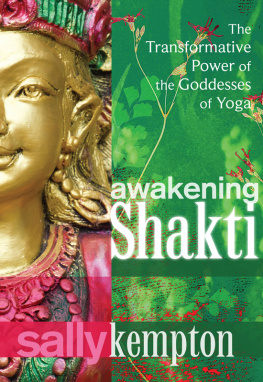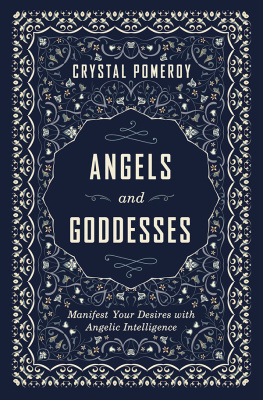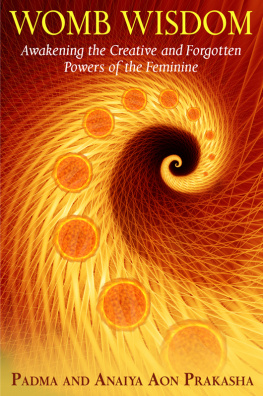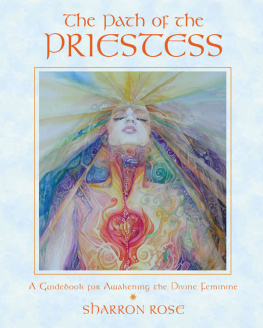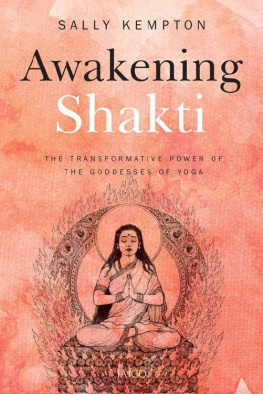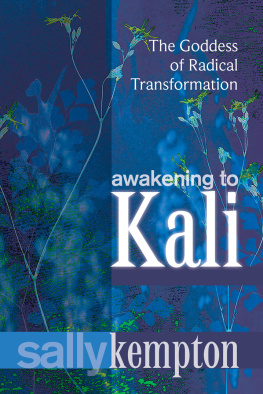
To my mother
Contents
Illustrations
Acknowledgments
I offer profound appreciation to the students and friends who participated in my classes and teleconferences on the Goddess. Your attention, feedback, and friendship helped create this book.
Thanks to everyone at Sounds True who helped shepherd Awakening Shakti through the process, especially Tami Simon, Haven Iverson, Jennifer Holder, Elisabeth Rinaldi, Karen Polaski, Jennifer Miles, and Rachael Murray.
Andrea Ferretti, Haven Iverson, and Tami Simon read several of these chapters at an early stage, and made significant editorial suggestions. Kelly Notaras did a masterful job of editing the completed manuscript. My gratitude to them and to the others who gave important feedback: Karen Osborne, Marc Gafni, Constantina Rhodes, Rudy Wurlitzer, and Mark Schmanko.
This book is not a work of scholarship in the classical sense. As a Western devotee/practitioner, I stand with one foot inside the Indian tradition and another outside it. Ive interpreted these traditional texts and practices through a contemporary lens, often in the light of my own meditative experience. Im conscious that my interpretations are sometimes creative and often nontraditional. At the same time, I have tried to let the tradition live in me and speak through me, to let my story and the stories of the goddesses dance together. That said, Awakening Shakti could not have been written without the work of so many scholars, practitioners, and devotees whose writings and translations I have relied on to guide me through the thicket of Shakta literature and symbolism. I am especially grateful to the late David Kinsley, whose books Hindu Goddesses and Tantric Visions of the Divine Feminine are foundational for anyone who studies the sacred feminine. Ive also been influenced by the writing of master Indologist Heinrich Zimmer and by Andrew Harvey, whose wonderful book Return of the Mother carries the Goddesss passion better than any I know. My friends Douglas Brooks and Constantina Rhodes always inspire me with their insights into how the mythic realms interface with the personal psyche.
Deep bows to all the sages and scholars whose works are cited in this book. Any mistakes Ive made through inattention or audacity are not your fault, but my own.
Special thanks to Yoga Journal and my editors thereKaitlin Quistgaard, Andrea Ferretti, Charity Ferreira, Hillari Dowdle, Shannon Sexton, and Kathryn Arnoldfor giving me such a privileged platform from which to write about issues of the inner life, for your editorial brilliance, and for publishing my first articles on the goddesses.
To Deb Buxton, my indispensible virtual assistant, for help on every front.
To my dear friend Marc Gafni, whose insight and precision help make everything I write better, and whose love and kindness always expands my heart.
My deepest gratitude to Swami Muktananda, who kindled the energy of the Goddess inside me and showed me how to revere her inner forms.
To Ramakrishna Paramahamsa and all the other lovers of the divine Mother, whose devotion helps reveal her to the world.
To the goddess Matangi, who translates the Goddesss subtle wisdom into the earthy language of daily experience, and whose shakti pervades this book.
Above all, to the most personal of all forms of the Goddess, my inner lover, guru, and guide, Chiti Kundaliniby whose grace we are, in the end, set free.
CHAPTER 1
A Crown of Feminine Design
The Goddess Incarnates
I am the sovereign queen, the treasury of all treasures,
whose breathing forth gives birth to all the worlds and yet
extends beyond themso vast am I in greatness.
DEVI SUKTA (Praise Hymn of the Goddess)
from the Rg Veda
If there is to be a future, it will wear a crown of feminine design.
AUROBINDO GHOSE
O ne October night in rural India, I fell in love with the Goddess. It happened on the second night of a festival called Navaratri, which celebrates the divine feminine as the warrior Durga, slayer of the demons of ego and greed. Like so many festivals in India, Navaratri is both a big party and an occasion for mystical communion with the divine. Women put on their most gorgeous clothes; temples overflow with worshippers. Nights are filled with dancing and storytelling. People have heightened, even visionary, experiences of the energy that the festival invokes.
That night, several hundred of us had gathered amid a blaze of candles next to a huge statue of Durga, eighteen feet high in her red sari, seated on top of a white tiger, arms bristling with weapons. I was supposed to tell one of my favorite mythological tales, the story of the romance of the Goddess Sati.
I was thrilled by the opportunity to tell a storysomething I love to doin such a heightened atmosphere. But when I stood up to speak, I was seized by a feeling much bigger than excitement. It was a kind of ecstasy, a deep pulsing joy that nearly undid me while I tried to form the words of my tale. Later, I would learn to recognize this feeling as one of the characteristic signatures of the Goddesss presence. The divine feminine has a thousand names and a thousand moods, but when she chooses to show up for you, she very often shows up as ecstasy.
Ecstasy is a feeling that is hard to convey and impossible to ignore. Every few minutes, I had to stop talking because tears kept threatening to break through my voice. When it was over, I knew that something had just happened which would change my life.
It wasnt just the story that did it. But Ill tell you the story anyway.
Back at the dawn of time, the great Goddess, who creates the world and then lives as the world, is asked to incarnate as Sati (She-Who-Is) in order to make the sacred marriage with her eternal consort, Shiva. Without her presence, Shiva cannot act in the world. He sits on a mountain, lost in meditation, disdaining to perform his cosmic function. This creates havoc in the cosmos. So, the great deities Brahma the Creator and Vishnu the Sustainer approach the Goddess on their knees. They beg her, for the sake of the world, to take the form of a woman and lure Shiva out of his yogic trance. Daksha, a minor elemental deity, will be her father.
The Goddess agrees, but only on one condition. She has seen that men and gods have begun to treat women as property, lesser creatures in the cosmic hierarchy. If I agree to become your daughter, she tells Daksha, you must promise to honor me as the Great Goddess. If you do not, I shall instantly leave my body, for I will know that the time is not yet right for me to act fully in the world.
Daksha humbly agrees, and Sati is born in his household. At the age of sixteen, she marries Shiva, drawing him out of meditation through the allure of her irresistible beauty and her power of creating bliss. Shiva is the primal outsider of the Hindu pantheon, the lord of thieves as well as yogis. The original shaman as well as the primal yogi, he resides in the deep forests and mountains, attended by ghosts and goblins. He refuses to change his homeless lifestyle just because he has a wife. So for eons, Shiva and Sati make passionate erotic love under trees and beside streams, in subtle realms beyond the clouds, and in secret mountain caves. They adore each other with cosmic passion.
Then the trouble starts. A few thousand millennia have passed. Daksha has worked his way into a position of power as the leading deity of religious orthodoxy. In the process, he has forgotten his promise to the Goddessand forgotten his daughters real nature. He disapproves of Shivas rebel status and feels personally threatened by Shivas obvious disdain for convention. Daksha plans a huge cosmic fire ritual, which will establish for all time the religious structures of the universe. He invites every god, titan, celestial musician, snake deity, and nymph in the universe. But in a fit of celestial malice, Daksha deliberately sends no invitation to his daughter and her consort.
Next page
